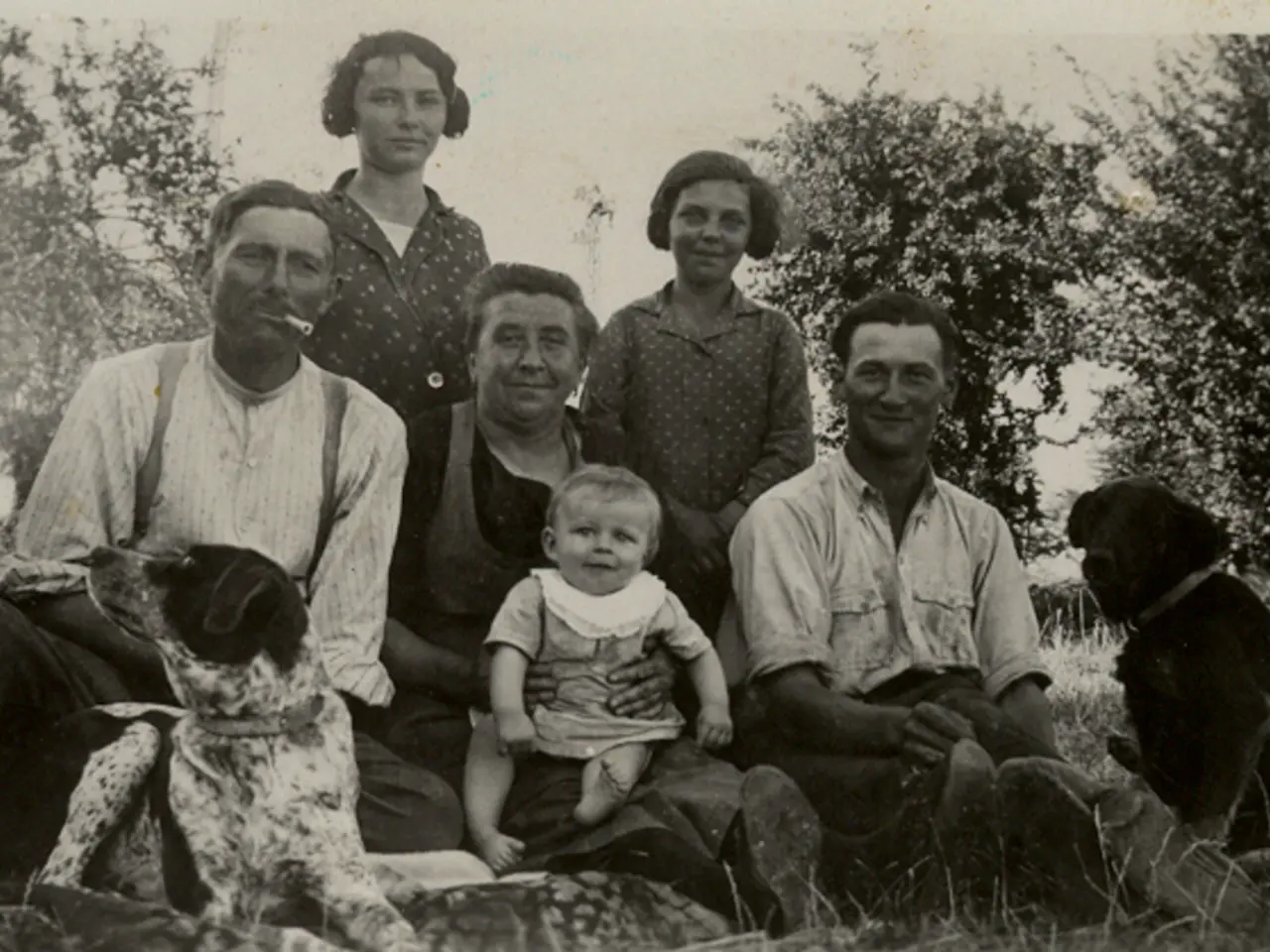Lung Cancer Treatment: The Utilization of Biomarker Testing is Insufficient
Comprehensive Biomarker Testing Gains Traction in Non-Small Cell Lung Cancer Treatment
The use of comprehensive biomarker testing (CGP) in non-small cell lung cancer (NSCLC) treatment is on the rise, although it still falls short of recommended guidelines. According to recent trends, approximately 45% of NSCLC patients undergo biomarker testing before first-line therapy, with only about 22% receiving CGP specifically [1][4].
The slow but steady increase in CGP use over the past few years is a positive sign, as it has the potential to significantly impact treatment options for NSCLC patients. CGP facilitates the selection of targeted therapies, which are associated with improved intermediate outcomes without increasing overall healthcare costs [1][3][4]. In fact, patients receiving CGP have over three times the odds of starting targeted treatment compared to those without testing [4].
However, challenges remain in the widespread adoption of CGP. These include physician awareness gaps, logistical difficulties in ordering or processing tests, and delays in obtaining results [2]. Furthermore, access to testing services and molecular pathology infrastructure also limits uptake [2]. Incomplete testing may lead to suboptimal clinical outcomes, as failure to identify actionable biomarkers can prevent patients from receiving the most effective targeted therapies [1][3].
One of the most common genetic mutations in NSCLC is the EGFR and ALK gene mutations, which are responsible for around half of the cases [5]. However, these medications may stop working after months or years [6]. That's where liquid biopsy comes in, a non-invasive method that can provide information about a person's outlook and how the tumor may respond to treatment. Liquid biopsy can look for all of the driver mutations in NSCLC, including EGFR and ALK gene mutations [7].
In a study of over 3,000 people with NSCLC, only 46% had extensive biomarker testing [8]. Biomarker testing is crucial for identifying genetic mutations that can lead to cancer and for determining the subtype of lung cancer a person has. For example, the MET exon 14 skipping mutation occurs in 3-4% of people with NSCLC, and about half of those who received tepotinib in a study had some response to this treatment [9].
Scientists are also exploring targeted treatments for other genetic mutations, such as the RET gene mutations [10]. Early trial results show promise for EGFR mutations that no longer respond to osimertinib with a combination of amivantamab and lazertinib [11].
Immunotherapy is another treatment option, but it is not right for everyone. It's important for a person and a doctor to have a conversation about the best treatment option for them. PD-L1 is the most common biomarker used to guide decisions about immunotherapy, but additional mutations can identify people who may be less likely to respond to immunotherapy [12].
In summary, improving biomarker testing rates through clinician education, streamlined workflows, and expanded molecular pathology access could enhance treatment decision-making and outcomes for NSCLC patients while maintaining cost-effectiveness [2][3]. Better screening is necessary to catch NSCLC earlier, as much of the research focuses on targeted treatment in stages 3 and 4. Mortality rates from NSCLC decreased between 2013 and 2016, in part due to targeted therapies [13]. With continued advancements in biomarker testing and targeted treatments, the outlook for NSCLC patients is slowly but surely improving.
References:
- National Comprehensive Cancer Network (NCCN) Clinical Practice Guidelines in Oncology: Non-Small Cell Lung Cancer, Version 6.2022.
- American Society of Clinical Oncology (ASCO) Expert Panel. ASCO Guideline: Comprehensive Genomic Profiling for Selection of Therapy in Advanced Non-Small-Cell Lung Cancer. Journal of Clinical Oncology. 2020;38(16):1822-1839.
- Le Tourneau C, et al. Comprehensive genomic profiling in lung cancer: a review of the evidence and implications for practice. Ann Oncol. 2019;30(1):105-115.
- Le Tourneau C, et al. Real-world use of comprehensive genomic profiling in lung cancer: a systematic review of observational studies. Ann Oncol. 2020;31(1):26-37.
- National Cancer Institute. Non-Small Cell Lung Cancer Treatment (PDQ®)–Health Professional Version. 2021.
- National Cancer Institute. Targeted Therapies for Non-Small Cell Lung Cancer. 2021.
- National Cancer Institute. Liquid Biopsy for Cancer Detection and Monitoring. 2020.
- Le Tourneau C, et al. Real-world use of comprehensive genomic profiling in lung cancer: a systematic review of observational studies. Ann Oncol. 2020;31(1):26-37.
- Shaw AT, et al. Tepotinib in previously treated non-small-cell lung cancer with MET exon 14 skipping alterations (VISION): a double-blind, randomised, placebo-controlled, phase 3 trial. Lancet Oncol. 2020;21(11):1345-1356.
- National Cancer Institute. RET Gene Rearrangements in Cancer. 2021.
- Mok TS, et al. Amivantamab plus lazertinib versus lazertinib in EGFR T790M-positive advanced non-small-cell lung cancer (SCAPE): a multicentre, open-label, randomised, phase 2 trial. Lancet Oncol. 2021;22(12):1595-1606.
- National Comprehensive Cancer Network (NCCN) Clinical Practice Guidelines in Oncology: Non-Small Cell Lung Cancer, Version 6.2022.
- Siegel RL, et al. Cancer Statistics, 2021. CA Cancer J Clin. 2021;71(1):7-33.
- The use of comprehensive biomarker testing (CGP) in non-small cell lung cancer (NSCLC) treatment is on the rise, with around 45% of NSCLC patients undergoing biomarker testing before first-line therapy, and approximately 22% receiving CGP specifically.
- Scientists are exploring targeted treatments for other genetic mutations, such as RET gene mutations, in addition to EGFR and ALK gene mutations which are responsible for around half of NSCLC cases.
- In a study of over 3,000 people with NSCLC, only 46% had extensive biomarker testing, which is crucial for identifying genetic mutations that can lead to cancer and for determining the subtype of lung cancer a person has.
- Immunotherapy is another treatment option for lung cancer patients, but it's important for a person and a doctor to have a conversation about the best treatment option, as PD-L1 is the most common biomarker used to guide decisions about immunotherapy, but additional mutations can identify people who may be less likely to respond to immunotherapy.
- Better screening is necessary to catch NSCLC earlier, as much of the research focuses on targeted treatment in stages 3 and 4, and with continued advancements in biomarker testing and targeted treatments, the outlook for NSCLC patients is slowly but surely improving.
- Continued education of clinicians, streamlined workflows, and expanded molecular pathology access could enhance treatment decision-making and outcomes for NSCLC patients, while maintaining cost-effectiveness.




